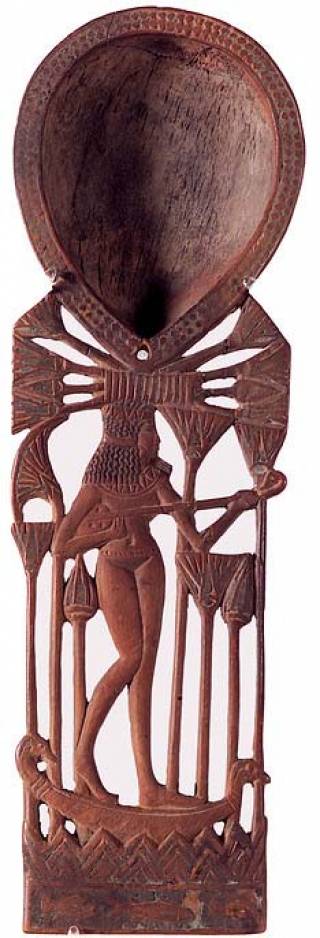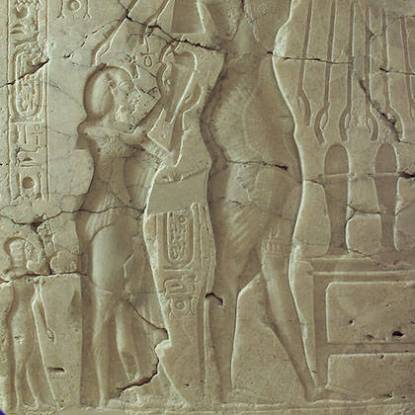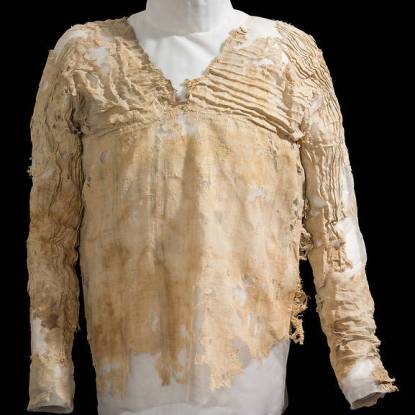Dancing girl cosmetic spoon
An intricate wooden toilet spoon in form of an ankh; cross pieces formed by tied lotus flowers, the base (handle) formed of a nude girl with lute standing in a boat, the bow and stern sculpted as duck heads, among tall lotus flowers and buds. Beneath boat, zigzag lines denote water, in which two kinds of fish swim. There is also a hole for the attachment of a hinged cover of the spoon bowl.

From an excavation at Sedment by E. Naville for the Egypt Exploration Fund, not one carried out by Petrie, and from the tomb of the governor Menena. Another cosmetic spoon in the collection featuring two figures of Bes around a flowering papyrus stalk is from the same source.
A toilet spoon, or cosmetic spoon, would have been used for storing or mixing perfumes and minerals for make-up. They were often very simple but these two inricate and highly crafted spoons are clearly high status objects.
Eye make-up was used by the Ancient Egyptians to protect them from disease and the sun’s harsh rays. Lead-based compounds were used as both pigments and medicines in the formulation of makeup materials. Chemical analysis of cosmetics samples found in Egyptians tombs and the reconstitution of ancient recipes as reported by Greco-Roman authors have shown that two non-natural lead chlorides (laurionite Pb(OH)Cl and phosgenite Pb2Cl2CO3) were purposely synthesized and were used as fine powders in makeup and eye lotions. According to ancient Egyptian manuscripts, these were essential remedies for treating eye illness and skin ailments.
Further information
Learn more about the use of makeup in Ancient Egypt in Analytical Chemistry 'Finding Out Egyptian Gods’ Secret Using Analytical Chemistry'.
 Close
Close




